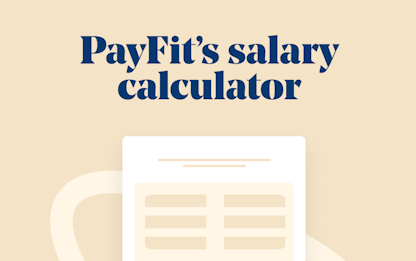- Blog
- |People management
- >Employment law
- >Contract Terminations & Redundancy Payments
Everything You Need to Know About Contract Terminations & Redundancy Payments


Contract terminations are never an easy thing.
Whether it's a series of redundancies due to downsizing or the death of an employee, there’s a lot to process (both technically and emotionally).
From the employer’s standpoint, it’s paramount that leavers receive just compensation. Typically, they'll be a termination payment of some sort in these situations: redundancy, a settlement agreement or death. An employer must also terminate a contract in the event of a non-starter.
The type of payment a departing employee receives depends on how they were terminated and what’s negotiated between them and the employer.
In this guide, we’ll look at the types of contract terminations where payment is required and the processes that must be followed.
Redundancy
What is redundancy?
Redundancy is a special type of dismissal used when an employer is required to reduce their headcount. In other words, it’s used when a role(s) becomes obsolete, or an organisation needs to downsize. Employers must follow certain rules to ensure employees are fairly compensated in this situation.
What are the reasons behind redundancy?
There are three main reasons as to why somebody may be made redundant, they are:
the company that employs the employee(s) ceases trading;
the company ceases trading from the location where the employee is employed;
the business undergoes a restructuring process that leads to the employee's job becoming surplus to requirements.
Does an employer have to pay redundancy?
If an employee has been in the same position for at least two years, then an employer is required to pay the legal minimum, otherwise known as statutory redundancy pay. Of course, an employer can offer additional pay above the minimum required if they choose to do so.
How is redundancy pay calculated in the UK?
With this type of contract termination, the figure an employee receives will depend on their age, their weekly pay and the number of years they’ve worked at their job.
Age
Up to 21 - An employee made redundant at or under this age is entitled to half a week's pay for each full year worked
22-40 - An employee within this age range is entitled to one week’s compensation for each full year worked.
41 and over - Employees over 41 are entitled to one and a half weeks’ pay.
Weekly pay
We can determine weekly pay as the average earned per week over the 12 weeks the day before an employee gets served their redundancy.
Number of years worked
As explained, a worker who’s been in their position less than two years can’t qualify for redundancy.
Let’s say an employee is over the age of 41, and they’ve been at their position for five years. Their average weekly pay is £600:
£600 x 1.5 = £900
£900 x 5 = £4,500
The amount of redundancy pay they’re automatically entitled to is £4,500.
| Employment rights | ||
|---|---|---|
| 21 or under | 22-40 | 41 and above |
| Half a week’s pay | A full week’s pay | One and a half weeks’ pay |
What’s the maximum redundancy payment someone can receive?
The length of the service is capped at 20 years, and the redundancy payment itself is currently capped at £538 per week. Consequently, the maximum redundancy payment is £16,140.
Maximum redundancy payment calculation
£538 x 1.5 = £807
£807 x 20 = £16,140
Tax and National Insurance
Redundancy payments are included in the £30,000 tax-free threshold for termination payments.
Anything above £30,000 is taxable. There’s never any employee National Insurance (NI) charge on a termination payment.
From the start of the 2020/21 tax year, employers will be due to pay Class 1A NI on termination payments above £30,000.
Settlement Agreement
What is a settlement agreement?
A settlement agreement is a mutual agreement between an employee and an employer to terminate the employment contract. Typically, the employer would offer the employee compensation as a settlement.
What’s included in a settlement agreement?
A settlement agreement can include several different payments. These include:
compensation for the loss of employment;
compensation for the loss of any benefit;
ex-gratia - a voluntary gift or payment made by the employer;
payments in lieu of notice (PILON) are taxable, and NI must also be paid;
post Employment Notice Pay (PENP) is are taxable, and NI must also be paid.
Tax and National Insurance
Settlement monies are included in the £30,000 tax-free threshold for termination payments. All PILONs and PENPs are subject to tax and NI.
Death
What are the employer's obligations?
Unfortunately, from time to time, employees pass away. In this instance, employers are required to do things slightly differently.
An employer is required to immediately terminate a deceased employee’s contract and report this via the payroll for HMRC to be aware that this employee is no longer working.
How do you handle payroll for a deceased employee?
When an employee dies, they must be processed as if they were terminated. Their final paycheck will need to be issued and delivered either to their spouse or the person handling their estate. As part of this, unused vacation, or PTO, will also need to be paid out.
What about Pay As You Earn (PAYE)?
Tax is still due on the payment of a deceased employee; however, there is never any NI owed.
And their P45?
There is no need to issue a P45 in this case.
Non-starter
Why does it happen?
There are occasions when someone may be added to an employer’s payroll yet never actually turn up to work. If HMRC has already been informed on the Full Payment Submission (FPS) that the employee has started, they will also need to be told that they are a leaver.
Termination process
This specific kind of contract termination required an employer to terminate them as a non-starter, confirm that their end date is the same as their start date, and not issue a P45. Their year to date figures must also be reported as £0 on the FPS.
Payments after leaving
What are they?
These are payments made to a former employee after their P45 is issued, for instance, after HMRC is informed the employee has left the company.
Why are they needed?
They may be needed for anticipated payments such as bonuses and commission and non-anticipated payments such as in the case of error.
PAYE
Any payments made after an employee leaves their role will have an 0T M1 tax code.
NI
The NI treatment on payments after leaving will depend on the type of payment. If the payment is a “regular payment”, such as basic pay, then the normal NI period will apply—i.e. if the employer pays monthly, they will use a monthly NI calculation.
If the payment is an “irregular payment”, such as holiday pay or a bonus, then a weekly NIC calculation will always be used.
Handle terminations better with PayFit
PayFit makes terminating employee contracts easy and straightforward.
Our payroll management platform makes calculating payments for base pay and annual leave a cinch. On top of this, it can automate PILON and statutory redundancy calculations.
Termination payments and the associated tax and NIC treatment can also be dealt with swiftly by selecting the reason for an employee leaving.
PayFit's disclaimer
The information contained in this document is purely informative. It is not a substitute for legal advice from a legal professional.
PayFit does not guarantee the accuracy or completeness of this information and therefore cannot be held liable for any damages arising from your reading or use of this information. Remember to check the date of the last update.

The 2024 UK National Living Wage - An Employer’s Guide

The Cost Of Recruitment In The UK - What You Might Not Know

UK National Insurance Changes for January 2024

End Of Tax Year 2023/2024 - Eight Key Changes For 24/25

Strategies to Reduce Employee Turnover


